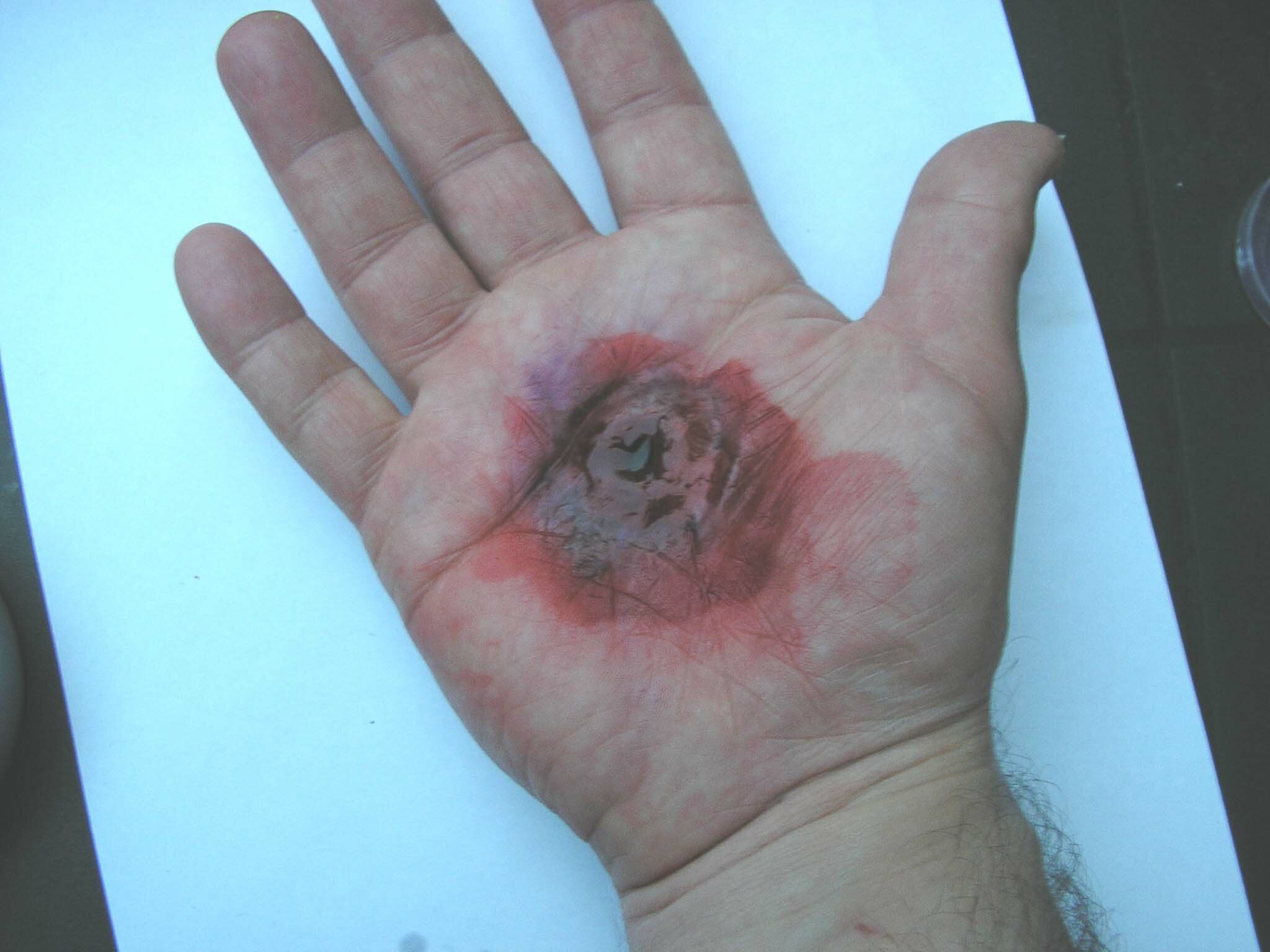yesterday, 221907(:
or should it be a ): ?
i wonder .
played a game of solitaire to calm myself down and to also think about how to organise those stupid thoughts squirming like mad in my brain NOW.
yesterday i learnt. alot of things i guess.
i learnt that DO UNTO OTHERS WHAT YOU WANT OTHERS TO DO UNTO YOU.
but also. remember to put yourself into that person's shoes.
i was being constantly scolded by my father ,for no reason?
not to say being scolded, and not to say for no reason.
maybe i was too 不懂事, maybe he was too pekchek and then his anger suddenly erupted.
i was wrong, i guess.
then at night, watched a documentory on art central. on STIGMATA.
you know what that is? i dont know either.
when i see those wounds, those are located EXACTLY WHERE THE PARTS JESUS WAS BEING NAILED TO.
this is an explanation of stigmata,
when i was watching this show, i was like keeping whispering 'f***ing assholes.'Stigmata are bodily marks, sores, or sensations of pain in locations
corresponding to the crucifixion wounds of Jesus. The term
originates from the line at the end of Saint Paul's Letter to the
Galatians where he says, "I bear on my body the marks of Jesus," with
"marks" in the Latin Vulgate rendered as "stigmata."
An individual bearing stigmata is referred to as a stigmatic.
The causes of
stigmata are the subject of considerable debate. Some contend that they are miraculous, while
others argue they are hoaxes or can be explained
medically.
Stigmata are primarily associated with the Roman
Catholic faith. Many reported stigmatics are members of Catholic religious
orders. The majority of reported stigmatics are female.[1]Reported cases of stigmata take various forms. Many show some or all of the
five Holy
Wounds that were, according to the Bible, inflicted on Jesus during
his crucifixion: wounds in the hands and feet, from nails, and in the side, from
a lance. Some stigmatics
display wounds to the forehead similar to those caused by the crown of thorns. Other
reported forms include tears of blood or sweating blood, wounds to the back as
from scourging, or wounds to the
shoulder as from bearing the cross.
Some stigmatics feel the pain of wounds
with no external marks; these are referred to as invisible stigmata. In other
cases, stigmata are accompanied by extreme pain. Some stigmatics' wounds do not
appear to clot, and stay fresh and uninfected. The blood from the wounds is
said, in some cases, to have a pleasant, perfumed odor.[citation
needed]
Cases of stigmata have been reported at different ages for
different stigmatics. Some have manifested stigmata continually after the first
appearance; others have shown periodic stigmata that re-occur at certain times
of the day or on certain, sometimes holy, days throughout the year.There have been historical stigmatics that were known to have faked wounds,
such as Magdalena de la
Cruz (1487–1560), who admitted the
fraud.
Similarly self-inflicted wounds can be associated with certain mental
illnesses. Some people who fake stigmata suffer from Munchausen syndrome
which is characterized by an intense desire for attention. People with
Munchausen hurt themselves or fake an illness hoping to end up in a hospital
where they can be given attention and care.
Skeptics also point out that
stigmata have appeared on hands in some cases, wrists in others, and the lance
wound has appeared on different sides of the body. This suggests some form of
internally generated phenomena, based on the victim's own imagination and
subjective in character, rather than something of external divine origin. It is
unknown, either through the gospels or other historical accounts, whether crucifixion involved nails
being driven through the hands, or wrists, or what side the lance pierced
Christ's body, and this would appear to be reflected in the inconsistent
placement of stigmatists' wounds. However, Roman Crucifixions involved the nails
driven through the ulna and radias gap, being just medial to the wrist.
Similarly, no case of stigmata is known to have occurred before the
thirteenth century, when the crucified Jesus became a standard icon of Christianity in the west.[5]. Since
crucifixes typically show Jesus having been nailed by the hands, people
popularly believed this depiction to be true. As such, if one were to receive
stigmata through the wrists, people would not consider it as Jesus' wounds.
In his paper Hospitality and Pain, iconoclastic Christian theologian Ivan
Illich touches on the phenomenon of stigmata with characteristic terseness:
"Compassion with Christ... is faith so strong and so deeply incarnate that it
leads to the individual embodiment of the contemplated pain." His thesis is that
stigmata result from exceptional poignancy of religious faith and desire to
associate oneself with the suffering Messiah.
i mean wtf is this lah?! although this can be explained medically,
but why should they 'mimick' Jesus? HUH?
wtf can. DAMN YOU ASSHOLES! and still most of the people suffering are Catholics!
went to pray to mary mother? like HELLO?!
still think that this wounds are HOLY lah?
what fking shit is this.
i tell you, God will not exert this kin of pain to His people.
BECAUSE HE LOVES US, that's why.
WHAT DAMN BLOODY FUCKING SHIT IS THIS.


DAMN GROSS RIGHT! asshole lah, you think this is 'holy'? to hell with your nonsense!
the drilling upstairs our house makes me even more FREAKING PEKCHEK!
